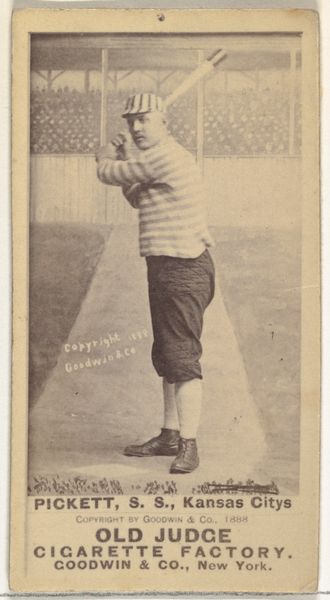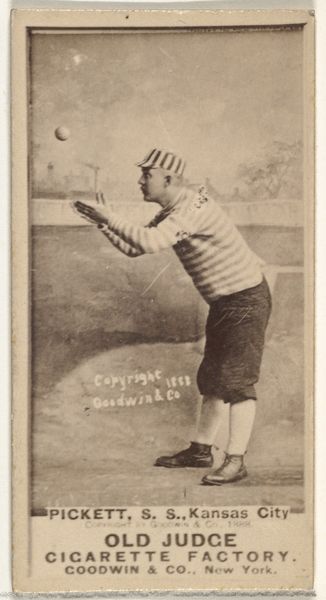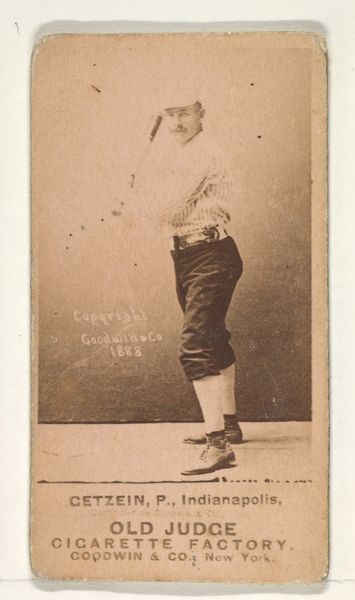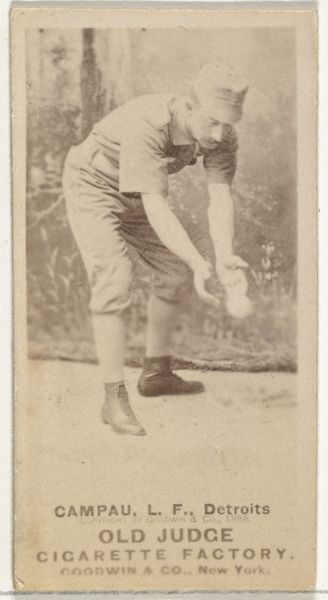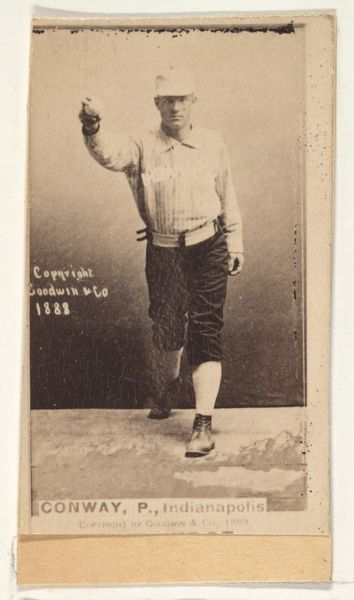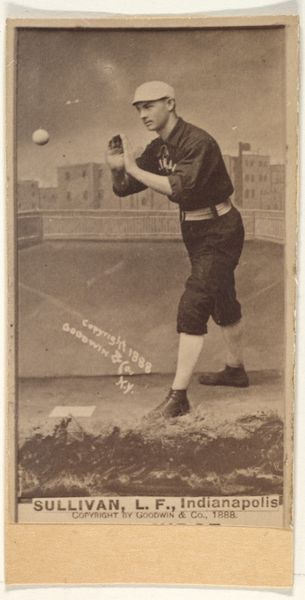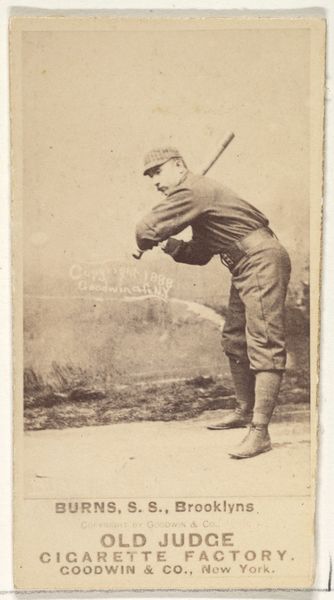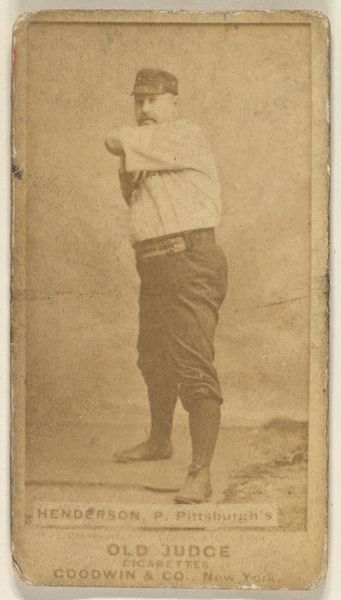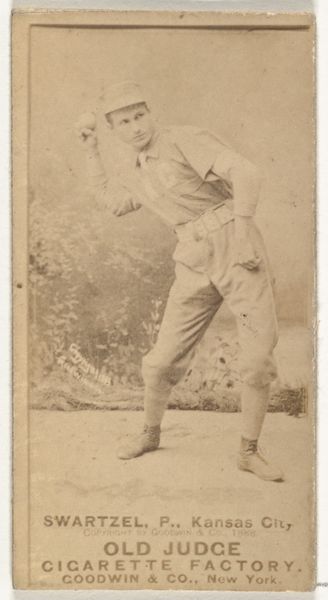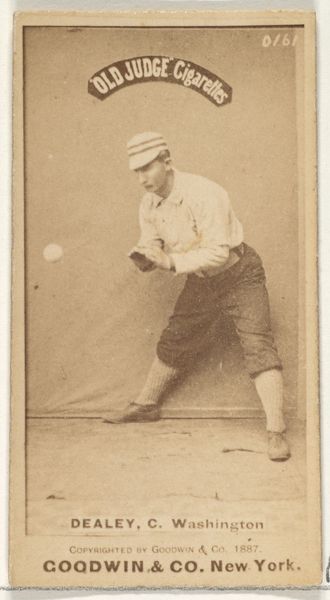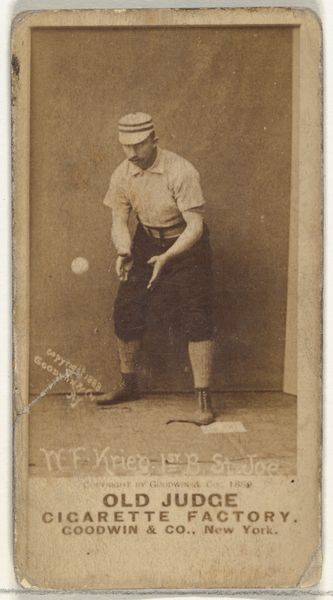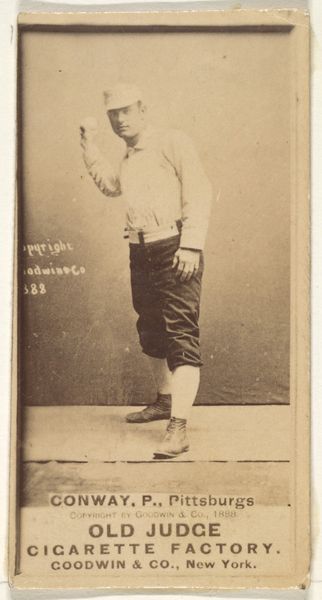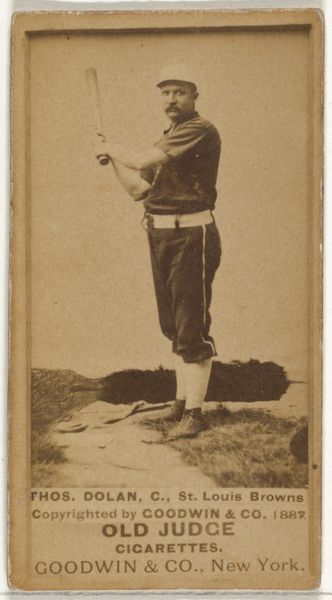
John Thomas Pickett, Shortstop, St. Paul Apostles, from the Old Judge series (N172) for Old Judge Cigarettes 1888
0:00
0:00
Dimensions: sheet: 2 11/16 x 1 3/8 in. (6.9 x 3.5 cm)
Copyright: Public Domain
Editor: This is "John Thomas Pickett, Shortstop, St. Paul Apostles," from 1888. It's a gelatin silver print, originally part of a cigarette card series. There's something about its age and simplicity that's compelling, almost melancholic. What can you tell me about this piece? Curator: Well, consider the context. This isn't just a photograph; it's a commodity, an advertisement embedded within the burgeoning culture of baseball and tobacco. These cards circulated widely, shaping perceptions of athletes and solidifying connections between masculinity, sport, and consumerism. What does the fact that it's connected with a Cigarette Factory mean to you? Editor: I hadn’t thought about the cigarette tie-in beyond branding, but you're right, that changes things. It's promoting not just Pickett, but a lifestyle. It feels different looking at it now. Curator: Exactly. And think about the way Pickett is framed. The idealized representation, bordering on a heroic stance…but who is represented? These images often participated in, or challenged, social power structures of the late 19th century. Does knowing it was a baseball card from a cigarette factory change how you interpret the "heroism" implied in this image of an athlete? Editor: It makes me question who the card was intended to reach and if the heroic narrative it uses is trying to distract people from what the cigarette industry was actually like at the time. Curator: Precisely. It speaks to the power of visual culture in constructing narratives, promoting specific ideals and normalizing industries – often at the expense of those whose stories were not told or whose voices were silenced. Understanding that broader context gives the image a different, more critical dimension, doesn’t it? Editor: It does. It's more complex and much more thought-provoking than I initially realized.
Comments
No comments
Be the first to comment and join the conversation on the ultimate creative platform.
